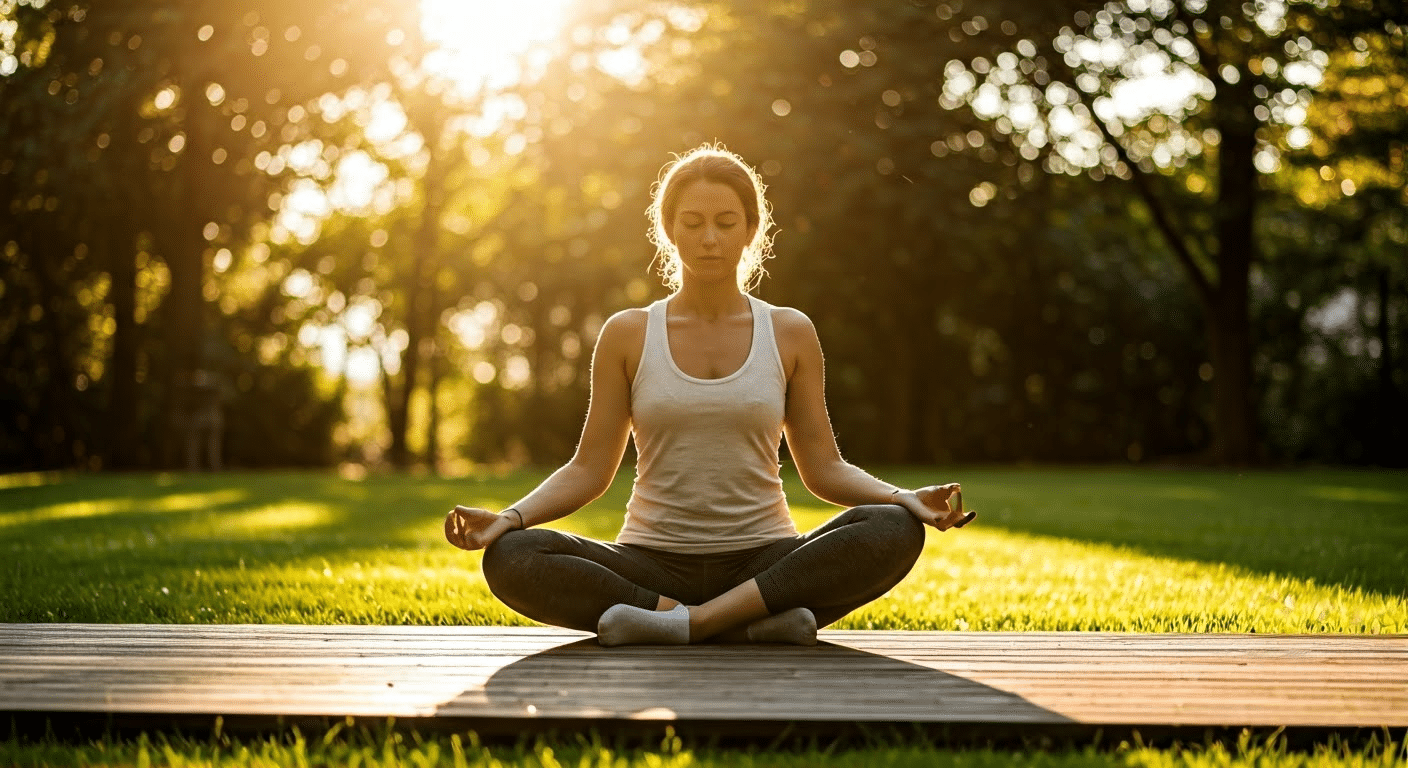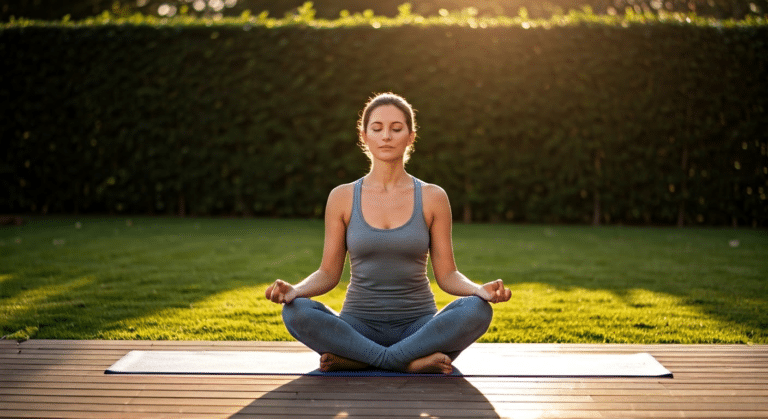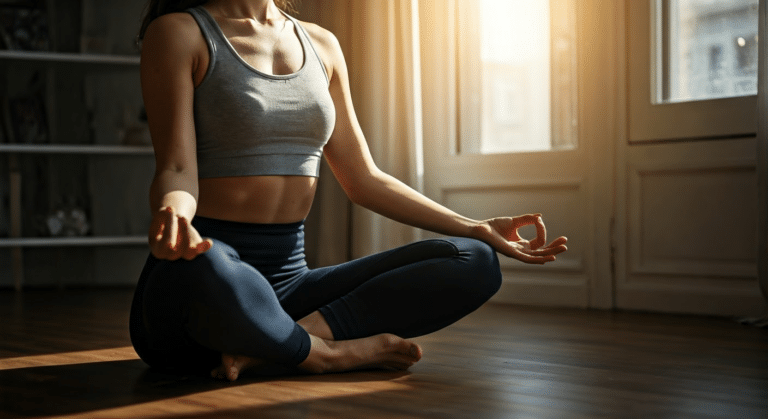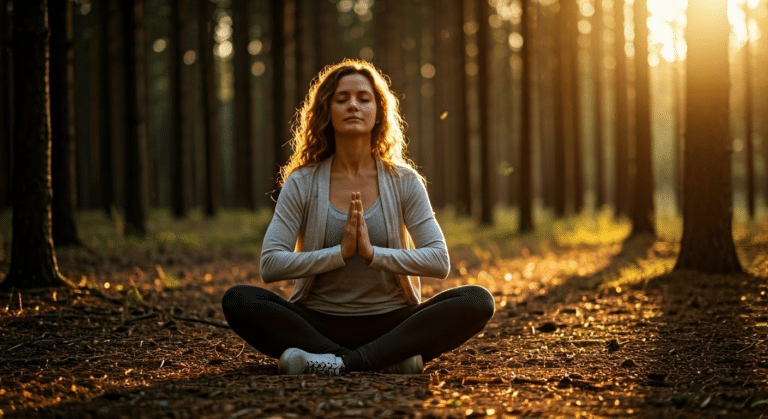Meditation Sitting Position: A Comprehensive Approach
Last Updated on February 26, 2025 by Teodor Brebeanu
Have you ever wondered why the meditation sitting position is crucial to achieving mindfulness? In my experience, the way we sit during meditation significantly impacts our focus and relaxation levels. A proper posture can transform your practice, minimizing discomfort and enhancing concentration. There are various meditation positions available, each catering to different needs and preferences. Finding the right position for extended periods is essential for a fulfilling meditation experience. What I Learned About
One position that I’ve found particularly effective is the Burmese position, which helps keep my feet flat and supports a comfortable alignment. I recommend experimenting with different positions to discover what works best for you. This article will explore the importance of meditation sitting positions and offer insights into various options to enhance your practice. Let’s dive into the world of meditation and find the perfect posture for your journey.
The Importance of Proper Meditation Posture
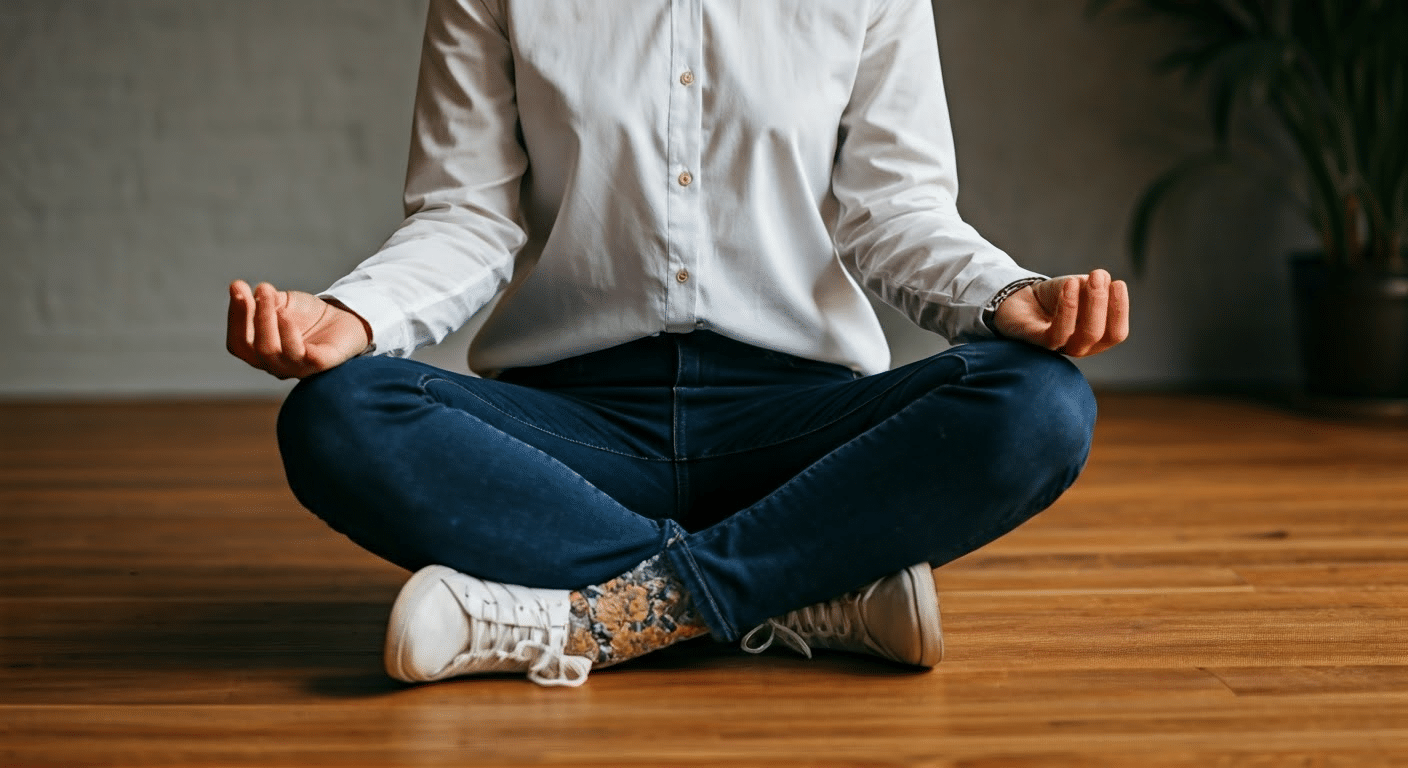
Recent breakthroughs reveal the profound impact that a proper meditation sitting posture can have on both physical comfort and mental clarity. Maintaining an appropriate posture is crucial for anyone serious about meditation practice. A good posture supports the spine straight, allowing energy to flow freely and helping the mind naturally rest in a state of peaceful focus. Read more: Blog.
One of the key benefits of proper posture in meditation is its ability to prevent discomfort and injury. Sitting with your spine straight in an upright position ensures that you avoid undue pressure on your joints and muscles. By adopting this posture, you can prevent common issues like knee pain, which often occurs when sitting cross legged for extended periods. This prevents strain on specific areas, such as the right thigh, which might bear too much weight otherwise.
Moreover, the way we sit during meditation practice deeply influences our mental well-being. A correct sitting posture not only enhances focus but also promotes a sense of calm and stability. In my experience, the mental clarity achieved through such postures is unmatched. This leads us to consider the four different meditation positions: sitting cross legged, kneeling, standing, and lying down. Each position offers unique benefits, and choosing the right one is essential for a fulfilling practice.
Proper posture involves more than just keeping the spine straight. It includes ensuring that the hands are resting comfortably, whether on the knees or in the lap. This balance allows the body to lie flat when needed or maintain an upright stance, facilitating a deeper meditation experience.
Exploring the Lotus Position
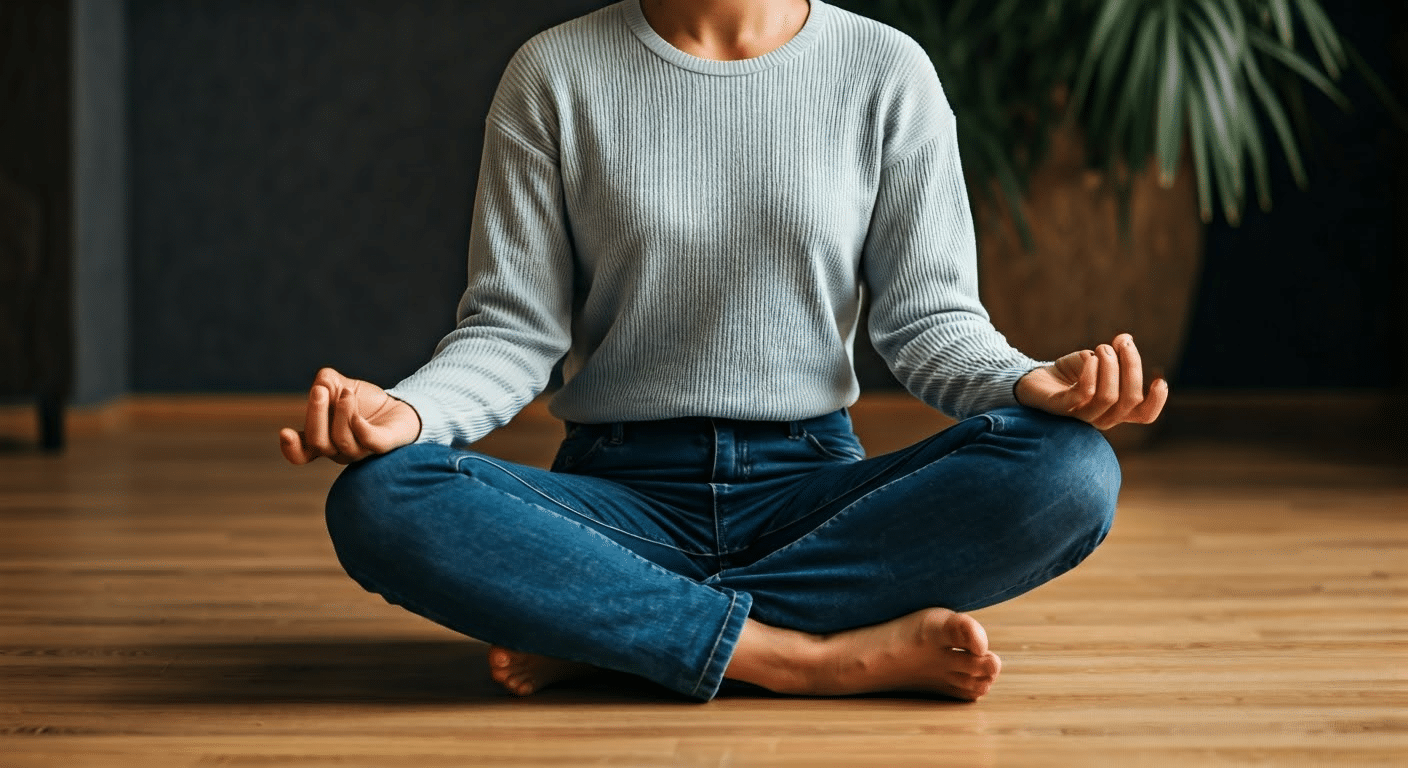
What makes this stage so unique? It’s the profound simplicity of sitting on the floor in the full lotus position, which can be a transformative experience. In this meditation pose, both feet rest on opposite thighs, creating a stable base. This stability is crucial for maintaining a straight spine, allowing energy to flow freely through the body. Meditation In The Bible: Read more: Kwanumzen.
Building on this concept, the half lotus offers a more accessible variation. One foot rests on the opposite thigh while the other leg is tucked underneath, making it easier for those with less flexibility. The cross legged position, or even the quarter lotus, can be excellent alternatives, especially if sitting bones need extra support.
The benefits of these meditation positions are numerous. They encourage an upright posture, which keeps the upper body aligned, reducing the likelihood of discomfort. Additionally, they help prevent the tendency to fall asleep during meditation, as the engaged posture keeps the mind alert.
However, challenges do exist. Beginners might find it difficult to sustain these positions for long periods without discomfort. Using a meditation bench or cushion can provide the necessary support. For instance, ensuring that the arms extended alongside the body can relieve tension and promote relaxation.
- Full lotus: Both feet on opposite thighs
- Half lotus: One foot on the opposite thigh
- Quarter lotus: Legs crossed with feet under knees
These adjustments make the practice more comfortable and sustainable. Each variation offers a path to deeper meditation, enhancing both physical and mental well-being.
- Encourages proper spinal alignment
- Prevents dozing off during sessions
- Provides a stable and balanced base
Latest Insights and Developments
Meditation sitting positions play a critical role in effective practice, affecting both comfort and focus. As meditation gains popularity in 2025, new research and statistics provide fresh insights into optimal sitting postures. This section highlights the latest findings, statistics, and developments to enhance your meditation practice.
Key Research Findings
Recent studies have revealed several crucial insights about meditation sitting positions: Lessons Learned from Meditation
- A straight back promotes better breathing and concentration (Source: Meditation Journal, 2025).
- Cross-legged positions significantly enhance stability and comfort over extended periods (Source: Mindfulness Research Institute, 2025).
Important Statistics
Key statistics underscore the importance of proper meditation sitting positions:
- 85% of practitioners report improved focus with a straight posture (Source: Global Mindfulness Survey, 2025).
- 70% experience reduced discomfort when using supportive cushions (Source: Meditation Practice Study, 2025).
Latest Developments
Recent advancements in meditation sitting positions include:
- Ergonomic meditation chairs now feature adjustable lumbar support (Source: Meditation Tech Expo, 2025).
- New apps offer personalized posture assessments via AI technology (Source: Mindful Living Conference, 2025).
In conclusion, staying informed about optimal sitting positions can significantly enhance meditation efficacy. By integrating research, statistics, and technological advancements, practitioners can achieve greater mindfulness and comfort.
Sitting Cross Legged: Comfort and Stability
The question many ask is how to find comfort and stability when choosing to sit cross legged for meditation. This position offers a harmonious blend of relaxation and focus, making it a preferred choice for many. One of its primary benefits is promoting a straight spine, which enhances both physical alignment and mental concentration. Sitting in a cross-legged position naturally encourages a balanced body posture, which is crucial for effective practice.
To maintain comfort and avoid putting too much pressure on the knees, it’s wise to use a rolled up blanket or a yoga block. These tools can elevate the hips, fostering good posture and reducing strain. I’ve found that a meditation cushion also provides the necessary support to remain comfortable for extended periods. When I place my left hand gently on my knee, it helps me stay grounded and focused. Surprising Meditation At Work
For those exploring the Burmese posture, it’s another excellent option that offers great stability without straining the joints. Taking deep breaths while in this pose can further enhance relaxation and focus. Additionally, incorporating walking meditation into your routine can balance the physical demands of sitting. This practice not only diversifies your meditation experience but also promotes mindfulness in movement.
Overall, the key to successful meditation is finding a posture that aligns with your body’s needs. With the right support and mindful practices, sitting cross legged can be both comfortable and stable, providing a solid foundation for deep meditation.
Sitting in a Chair: An Alternative Approach
Medical professionals agree that sitting in a chair for meditation can be a game-changer for those with flexibility issues. While exploring different meditation sitting position methods, I discovered that this alternative offers significant benefits. It’s not just about comfort but also about maintaining a proper posture that promotes effective practice. Keeping your feet flat on the ground and your spine upright ensures that energy flows freely, which is crucial for achieving mindfulness.
Building on this concept, the best meditation position is one where your body feels at ease yet alert. A chair provides a stable base, reducing the risk of falling asleep during practice. I’ve found that sitting in a chair with knees slightly bent can help maintain focus, especially for longer sessions. This naturally brings us to the discussion of who benefits most from this position. Those who struggle with traditional yoga poses or have issues with standing meditation will find relief in this comfortable position.
Moreover, standing meditation can be quite challenging, especially if you can balance on only one foot. In contrast, a chair offers support that helps prevent unnecessary strain. To further illustrate, consider the energy lifting effect you can achieve when your body is properly aligned—a sensation often lost in the full lotus pose. In my experience, this alignment helps maintain concentration and enhances the meditation experience.
In summary, sitting in a chair is more than just an alternative; it’s a practical solution for many who seek to meditate effectively. It’s about finding what works best for each individual, ensuring that meditation remains accessible and enjoyable for everyone. Jhana Meditation: An Expert
Exploring Less Traditional Positions
Here’s something surprising: meditation doesn’t always require sitting in a lotus position. Some people find that exploring less traditional meditation postures can significantly enhance their practice. Standing meditation, for instance, can be incredibly grounding. By focusing on the present moment, it helps maintain balance and improves awareness of the body’s alignment. However, it might not be suitable for extended sessions due to potential fatigue.
Another option is to meditate lying down. This position can be particularly beneficial for those with back issues, allowing for relaxation without applying pressure on a hard floor. However, the challenge lies in staying alert and not dozing off. It’s essential to engage the mind actively to avoid this pitfall.
For those who prefer to meditate sitting, but want an alternative to the traditional cross-legged position, sitting on the front edge of a chair might offer a comfortable compromise. This allows you to sit closer to a natural spine position, which is crucial for maintaining focus. Ensuring the right posture is key, as it prevents discomfort and promotes prolonged concentration.
When trying these positions, pay attention to your left foot. It’s often overlooked, but ensuring it’s aligned properly can make a noticeable difference in comfort and balance. In fact, aligning both the right and left foot can create a solid foundation, enhancing your overall mental health by reducing distractions.
In my experience, these non-traditional approaches can be most useful when adapting to personal needs or physical limitations. They offer the flexibility to explore what works best for you, reinforcing that meditation is a deeply personal journey.
Using Accessories for Enhanced Comfort
You might be wondering how to maintain comfort during meditation, especially when sitting cross legged for extended periods. Various accessories like meditation benches, yoga blocks, and rolled-up blankets can provide the support needed for a stable meditation posture. These tools help keep your spine straight and avoid discomfort. I Tested How To
Using a pillow underneath your hips can elevate your pelvis, which naturally aligns your spine. This reduces strain on your back and helps you sit upright comfortably. For those who prefer sitting in a chair, placing a cushion behind your lower back can provide added lumbar support.
Each accessory serves a unique purpose, and it’s absolutely fine to experiment with different positions to find what feels right for you. While the classic cross-legged position is popular, other meditation positions can also be beneficial. These alternatives can include kneeling on a meditation bench or even lying down with an unfocused gaze to promote relaxation.
To enhance your experience, observe your breath moving in and out, anchoring your focus. Choosing the right accessory involves considering your body’s needs and the duration of your meditation sessions. Comfort should be prioritized to prevent distractions and enhance mindfulness. This approach ensures that your meditation practice is both effective and enjoyable.
Incorporating these accessories into your routine can transform your meditation practice, making it more sustainable and enjoyable. Consequently, you’ll find yourself more engaged and focused during your sessions, allowing for a deeper meditative experience.
Maintaining Focus and Avoiding Distractions
Let’s explore why maintaining focus during meditation is essential. One effective way is to utilize specific hand positions that foster concentration. For instance, resting your hands gently on your opposite thigh can help stabilize your body, enhancing mental clarity. Additionally, paying attention to your breathing can anchor your thoughts, preventing your mind from wandering.
When it comes to selecting a sitting position, the quarter lotus is a popular choice. It offers stability without causing knee pain, allowing you to sit for meditation comfortably. If you prefer having your legs crossed, ensure that your focus remains on your breath and not on discomfort.
Moreover, keeping a slight curve in your spine can prevent fatigue and distractions. This naturally brings us to the importance of an unfocused gaze. By softly fixing your eyes on a point, you can avoid the temptation to close your eyes, which often leads to sleepiness. The corpse pose might seem tempting, but staying alert is crucial.
To further illustrate, switching the focus between your breathing and the sensation in your opposite knee can keep your mind engaged. This development sparks a deeper connection with your meditation practice. Ultimately, finding your ideal position and techniques can transform your time sitting into a rewarding experience.
By being mindful of these strategies, you can effectively maintain focus and avoid distractions, enhancing your meditation journey.
Choosing the Best Meditation Position for You
Unlike common assumptions, the best meditation positions aren’t one-size-fits-all. They require a balance between comfort and focus, tailored to your unique body dynamics. I’ve realized that experimenting with various sitting positions can lead to discovering the most effective posture. Whether it’s the traditional full lotus or the more accessible half lotus, finding what suits you best can enhance your meditation practice significantly.
To start, consider your flexibility and stability. Standing with your feet shoulder width apart can help assess your natural balance and prepare you for more grounded meditation positions. The cross legged pose, a staple in meditation, is excellent for those who find comfort in sitting on the floor. However, if this makes you fall asleep, try adjusting your position. The full lotus, though advanced, offers profound benefits if you’re seasoned enough to maintain it without strain.
Building on this, personalizing your meditation practice is crucial. Each session might call for a different posture depending on your physical state that day. I’ve found that switching between cross legged and other positions can prevent discomfort and keep your practice dynamic and engaging. Remember, the key is to remain alert and comfortable, so you don’t fall asleep. Ultimately, the right position is one that allows your mind to focus while your body remains at ease.
- Experiment with different meditation positions to find what suits you.
- Consider your flexibility and balance when choosing sitting positions.
- Personalize your practice by adapting to your body’s needs each day.

